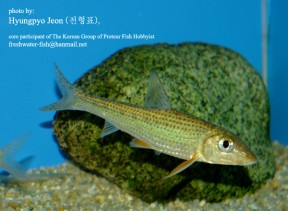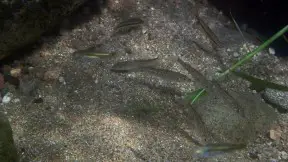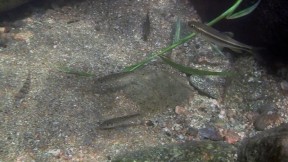Hemibarbus longirostris
SynonymsTop ↑
Acanthogobio longirostris Regan, 1908; Hemibarbus shingtsonensis Shaw, 1930; Paraleucogobio cheni Wu, 1931
Etymology
Hemibarbus: from the Ancient Greek ἡμι- (hēmi-), meaning ‘half’, and the generic name Barbus, to which members appear similar.
longirostris: from the Latin longus, meaning ‘long’, and rostrum, meaning ‘snout’, in allusion to this species’ extended snout.
Classification
Order: Cypriniformes Family: Cyprinidae
Distribution
Native to far eastern Asia, including northeastern China, southeastern Russia, the Korean peninsula, and Japan.
Type locality is ‘Chong-ju, South Korea’.
Habitat
A predominantly riverine fish preferring clear, well-oxygenated, running waters with substrates of sand, gravel, rock or mud, where adults tend to form schools just above the substrate in slower-moving sections.
Maximum Standard Length
200 – 250 mm.
Diet
Wild individuals are known to feed on benthic crustaceans, insects, molluscs, and other macroinvertebrates.
References
- Regan, C. T., 1908 - Proceedings of the Zoological Society of London 1908 (pt 1): 59-63
The Duke of Bedford's Zoological Exploration in eastern Asia - VIII. A collection of freshwater fishes from Corea. - Jang, M.-H., M. C. Lucas and G.-J. Joo, 2003 - Biological Conservation 114: 115-126
The fish fauna of mountain streams in South Korean national parks and its significance to conservation of regional freshwater fish biodiversity.





